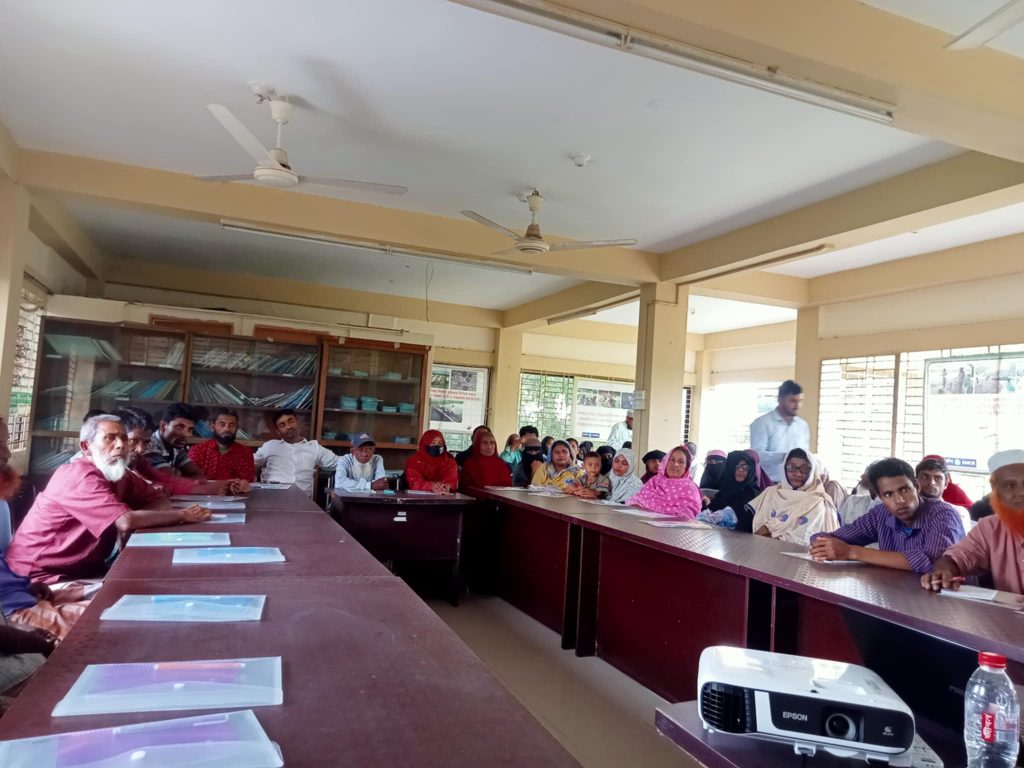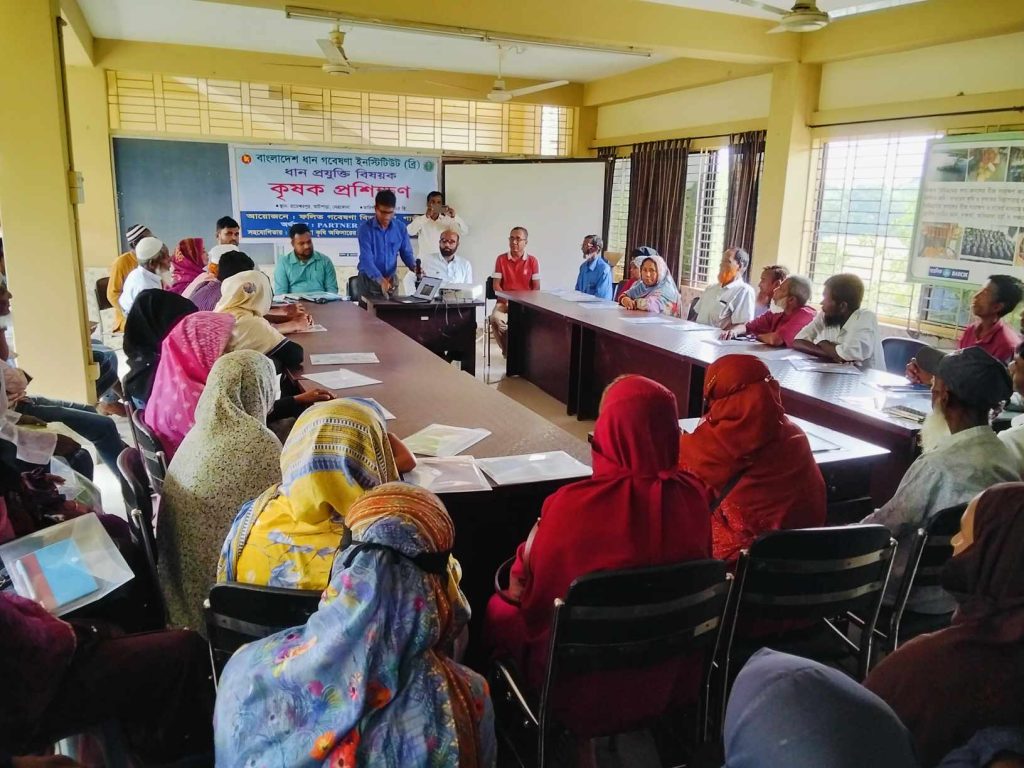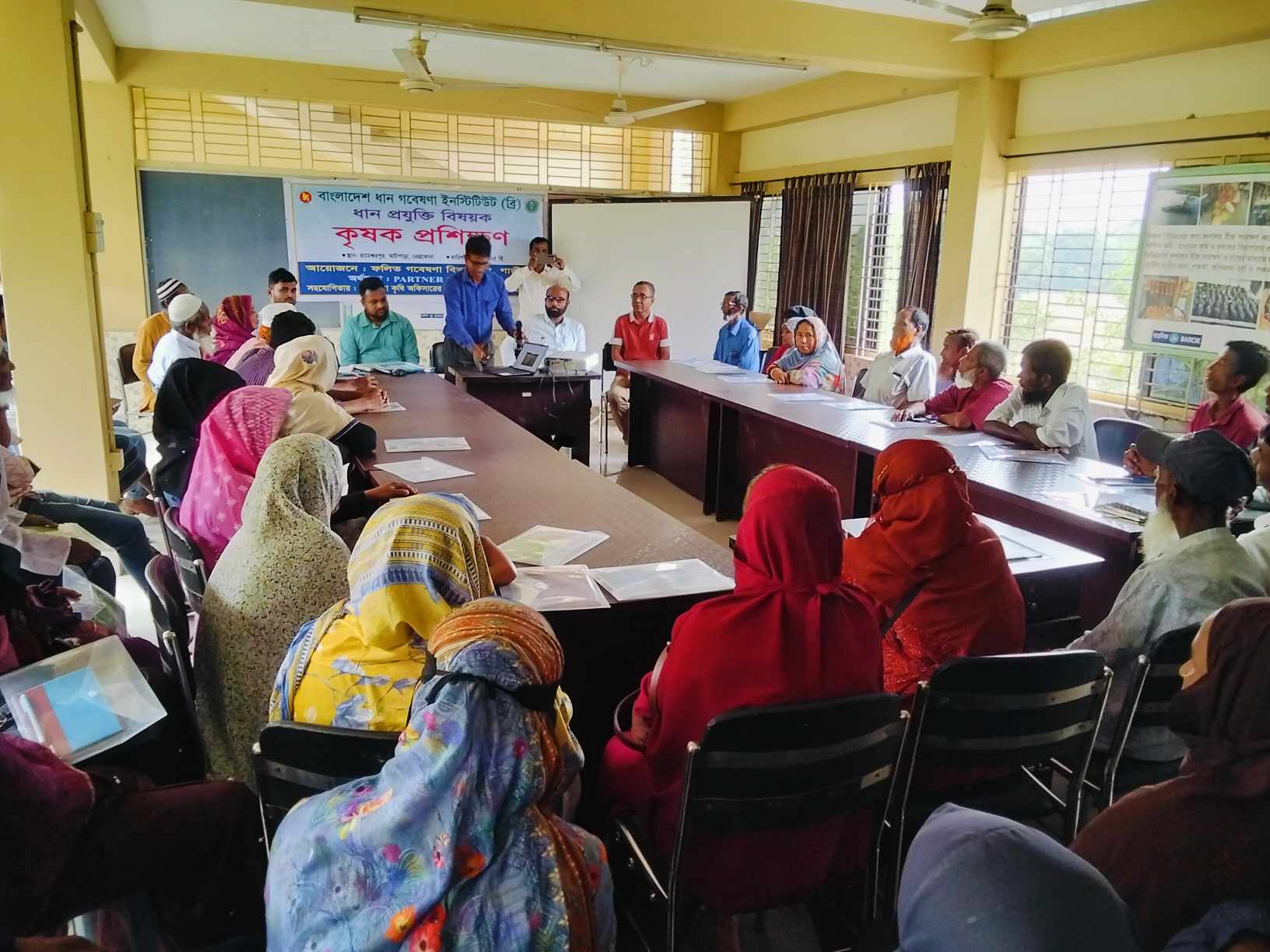By Ohidur Rahman From Netrakona
A training workshop on “Rice Production and Technology” was held at the Rameshwarpur Resource Center in Netrokona, organized by the Applied Research Division of Bangladesh Rice Research Institute (BRRI), Gazipur, with facilitation and resource support from BARCIK.

The chief guest of the workshop was Dr. Biswajit Karmakar, Chief Scientific Officer and Head of the Applied Research Division, BRRI. Other guests and participants included Researcher Mr. Habibur Rahman Mukul, Senior Scientific Officer, Applied Research Division (BRRI); Mr. Khalid Hasan Tarek, Scientific Officer and Head of the Regional Rice Research Institute, Netrokona; Mr. Khalid Hasan Sourav, Scientific Officer, Regional Rice Research Institute, Netrokona; Mr. Ohidur Rahman, Regional Coordinator of BARCIK; and Mr. Sayed Ahmed Khan Bacchu, President of the Netrokona District People’s Organization Coordination Committee.
A total of 65 farmers and women farmers from 35 farmer groups across 31 villages in Atpara, Kendua, and Netrokona Sadar upazilas of Netrokona district participated in the training and gained insight and knowledge.
During the training, Dr. Biswajit Karmakar delivered a detailed PowerPoint presentation on various categories of rice varieties, including Boro rice, Aman rice suitable for tidal areas, nutrient-rich rice, disease-resistant varieties, haor-adapted rice, new and premier quality varieties, cultivation methods, pest and disease control, flood-tolerant varieties, and both short- and long-duration types based on farmer needs. He also listened attentively to the challenges and possibilities shared by the participating farmers.

Senior Scientific Officer Mr. Habibur Rahman Mukul mentioned that BRRI has developed 118 rice varieties to date, which have played a significant role in ensuring food security and meeting farmers’ demands in the country.
Farmer Abul Kalam praised BRRI, saying, “Previously, we had low yields in rice cultivation. Now, we can produce 8 to 9 maunds of rice per 10 decimals of land. Though production costs are higher, food security is being ensured. At the same time, we are also researching and selecting local rice varieties for cultivation and distributing them among farmers.”

